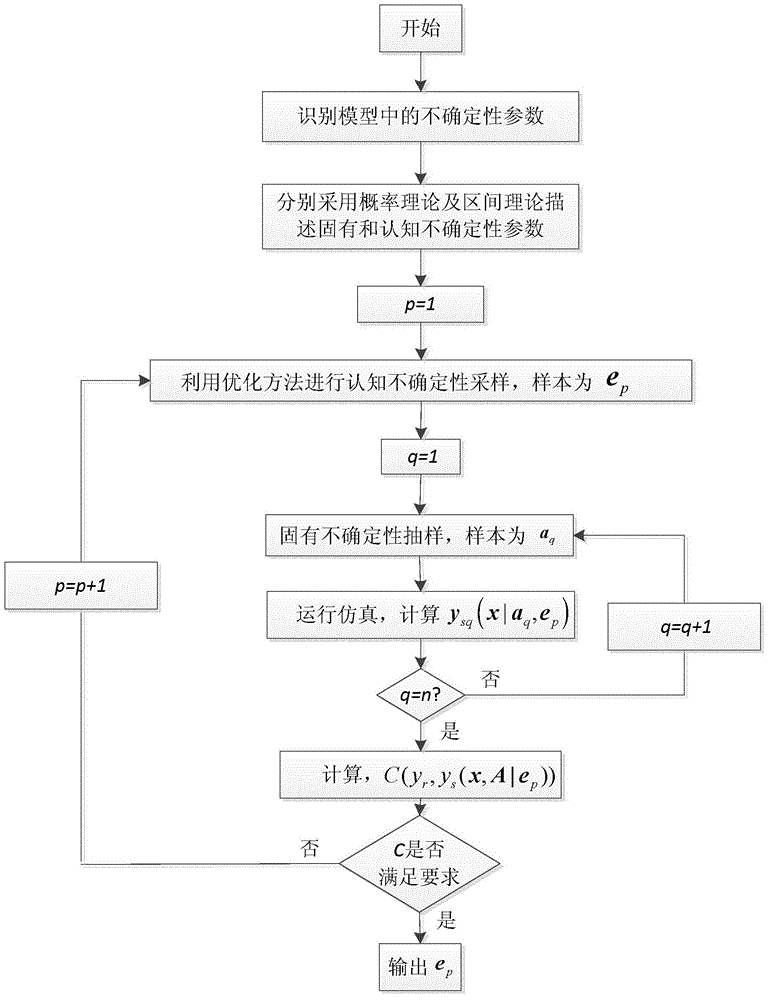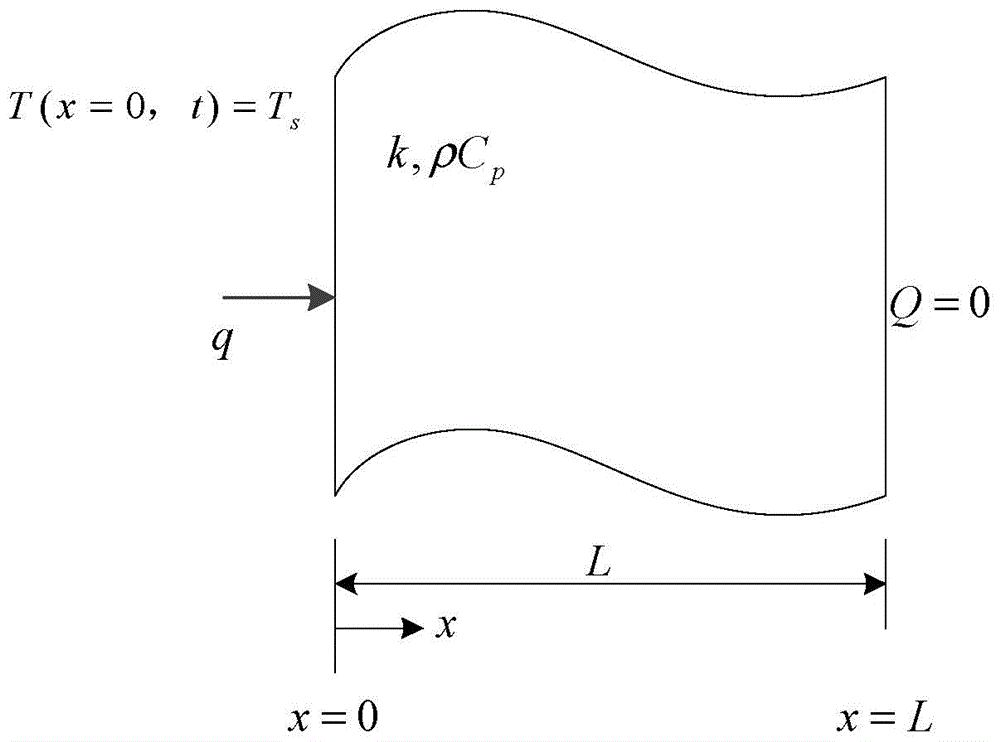Thermal conduction model calibrating method based on double-deck nesting uncertainty propagation
An uncertain, double-layer nested technology, applied in special data processing applications, instruments, electrical digital data processing, etc., to achieve the effects of wide application, simple implementation, and clear principles
- Summary
- Abstract
- Description
- Claims
- Application Information
AI Technical Summary
Problems solved by technology
Method used
Image
Examples
specific Embodiment approach 1
[0023] Specific implementation mode one: combine figure 1 A heat conduction model calibration method based on double-layer nested uncertainty propagation in this embodiment is specifically prepared according to the following steps:
[0024] Propagate the cognitive uncertainty parameters and inherent uncertainty parameters of the heat conduction model, steps 4 and 5 carry out the propagation of the inherent uncertainty parameters of the heat conduction model, steps 2 to 6 use the propagation results of steps 4 and 5 to optimize;
[0025] Step 1. Use the probability theory to describe the inherent uncertainty parameters of the heat conduction model, and obtain the probability distribution function of the inherent uncertainty parameter A; use the interval theory to describe the cognitive uncertainty parameters of the heat conduction model, and obtain the cognitive uncertainty Deterministic parameter interval;
[0026] Step 2. Using the optimization method to generate cognitive ...
specific Embodiment approach 2
[0037] Embodiment 2: This embodiment differs from Embodiment 1 in that the optimization algorithm described in Step 2 and Step 6 is a genetic algorithm or a simulated annealing algorithm. Other steps and parameters are the same as in the first embodiment.
specific Embodiment approach 3
[0038] Specific embodiment three: the difference between this embodiment and specific embodiment one or two is that the sampling method in step three is specifically: simple random sampling method or stratified sampling method; wherein, the stratified sampling method is Latin hypercube sampling or Uniform sampling methods, etc. Other steps and parameters are the same as those in Embodiment 1 or Embodiment 2.
PUM
 Login to View More
Login to View More Abstract
Description
Claims
Application Information
 Login to View More
Login to View More - R&D
- Intellectual Property
- Life Sciences
- Materials
- Tech Scout
- Unparalleled Data Quality
- Higher Quality Content
- 60% Fewer Hallucinations
Browse by: Latest US Patents, China's latest patents, Technical Efficacy Thesaurus, Application Domain, Technology Topic, Popular Technical Reports.
© 2025 PatSnap. All rights reserved.Legal|Privacy policy|Modern Slavery Act Transparency Statement|Sitemap|About US| Contact US: help@patsnap.com



